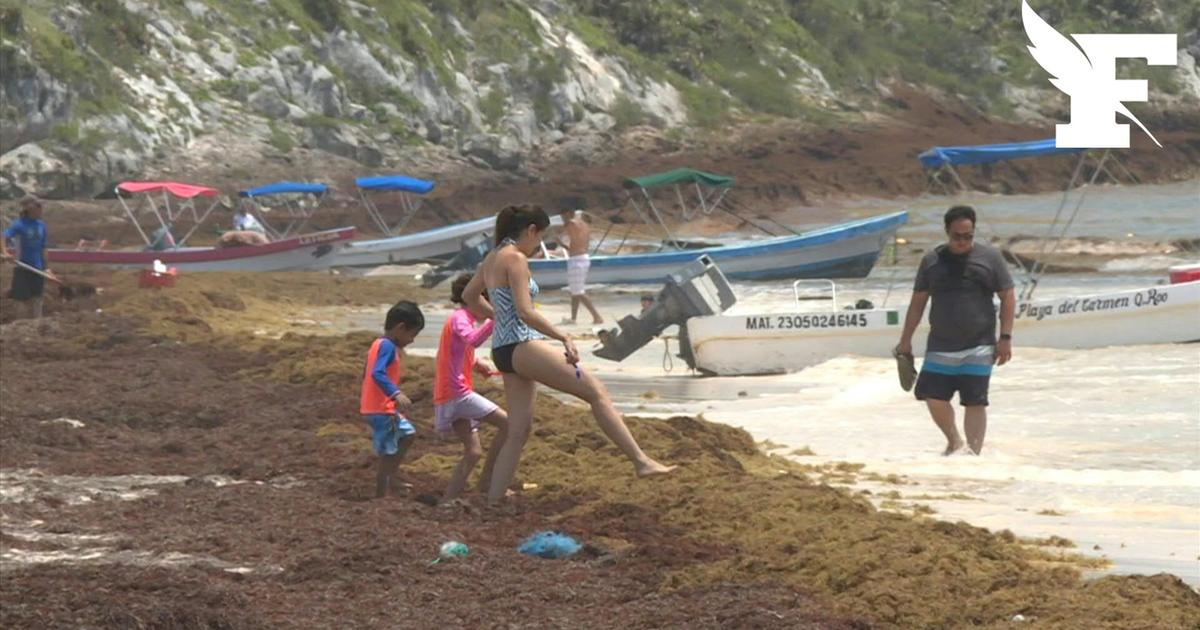The waters of the Malecon, the seafront of Santo Domingo, are darkened by brown algae that tractors are busy picking up: the proliferation of Sargassum worries the Dominican Republic, which lives largely from tourism.
To discover
- Podcast Elsewhere: Singapore's hidden surprises and treasures
At the moment, the most affected areas are Santo Domingo and San Pedro de Macoris, on the southern coast of the country. The algae that rot on the beaches emit a fetid smell. Sargassum quantities are lower in the east, in the province of Altagracia where the famous resorts of Punta Cana and La Romana are located.
But reports received at the Ministry of Tourism in April indicate the presence of Sargassum on 42.5% of the supervised beaches of this tourist area in April. In January only 25% were impacted.
Read alsoWhat you need to know about sargassum, these algae that may ruin your holidays
"They're there almost all year round"
Between January and March some 24 million tons of seaweed reached Dominican shores, compared to 14 million during the same period last year. And experts predict that quantities will increase further.
"Ten years ago, we saw Sargassum three months a year, but today it is there almost all year round from March to November," says marine biologist Andrea Valcarcel, head of the country's ocean laboratories division.
Hoteliers, concerned about their image and the comfort of tourists, pay brigades to collect seaweed in Punta Cana. "Sargassum is a major economic burden. Most hotels suffer and have invested in barriers (to prevent the advance of algae) and the collection of algae at sea and on land, "explained to AFP David Llivre, president of the hotel association.
See alsoAir Caraïbes announces a 50% increase in flights to the Dominican Republic
"If the volume continues to increase, it could have a negative effect" on tourism, he warns, while the Dominican Republic (10.5 million inhabitants) welcomed 8.5 million visitors in 2022.
For the past dozen years, these brown algae have invaded the coasts of the Caribbean, Guyana, Central America, the Gulf of Mexico, but also Côte d'Ivoire, Benin and Togo. They suffocate biodiversity and pose health problems due to the release of gases harmful to health (hydrogen sulphide, ammonia) resulting from their decomposition, but also environmental and economic.
Electricity generation affected
The causes of their proliferation continue to be studied. The increase in agricultural activity with the presence of fertilizers in the waters, the supply of nutrient salts related to deforestation in the Amazon, the modification of currents, the mists of the Sahara or global warming are the most evoked tracks.
The government of President Luis Abinader announced three years ago a $12 million fund — six from the state and six from the private sector — to fight sargassum, but the project was scrapped.
See alsoSargassum: a "black year" in perspective for the West Indies
Tenders for a control plan, which included cleaning up land and water and building offshore barriers, ranged from $25 million to $30 million. These were "palliative measures" that did not offer a "definitive solution", Tourism Minister David Collado told reporters.
Sargassum is also disrupting electricity generation in the Dominican Republic, where at least 1,200 megawatts are produced in thermal power plants using seawater.
Some plants are forced to "stop operating" or "reduce" their production because of the "risk of internal damage due to the penetration of sargassum," Energy Minister Antonio Almonte said.

